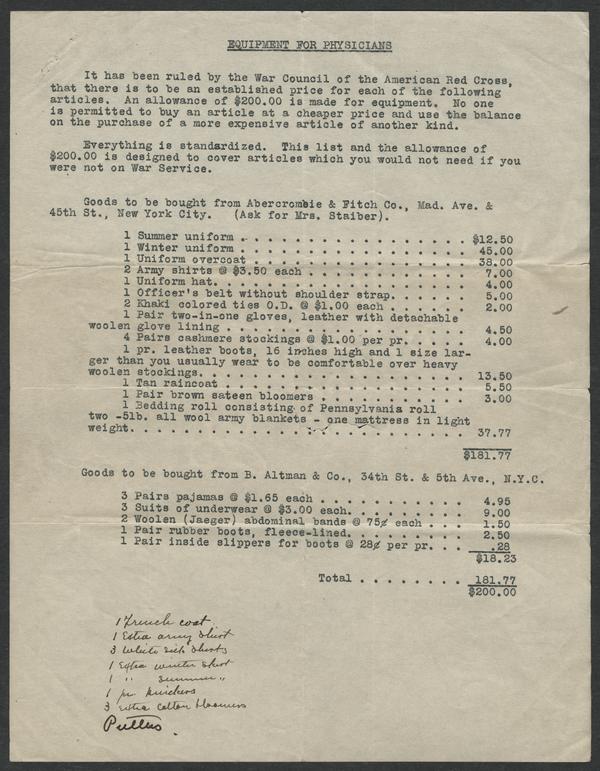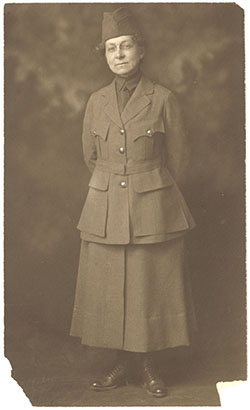When the United States entered World War I in April 1917, Dr. Anna Gove, resident physician at the North Carolina State Normal and Industrial College (now UNC Greensboro), began preparing to become part of the effort. Because female doctors were not allowed into the Army Medical Core, Dr. Gove looked for other opportunities to serve oversees.
By September 1917, Dr. Gove’s personal papers show that she had purchased French textbooks from the Cortina Academy of Languages to prepare for European war work. She had also sent a letter of resignation to Dr. Foust, President of the State Normal. In his return letter, Dr. Foust expressed his hope that “after conditions become normal that you may yet find it possible to be with us again.”
On January 29, 1918, a letter from the American Red Cross offered Dr. Gove a salary of $1800 a year for “general medical relief work among the refugees.” She was to set sail for France around March 1st. Additionally, she was provided with a $200 stipend to purchase equipment and uniforms. “Goods to be bought a Abercrombie & Fitch Co., Mad. Ave. & 45th St., New York City.”
 |
| List of equipment and uniform items to be purchased from Abercrombie & Fitch. Not the handwritten list of addition items purchased by Dr. Gove. |
Dr. Gove made the journey to France and was stationed at a clinic in Marseilles. Her letters home paint a picture of her daily life and environment. Marsielles, in the south of France, remained removed from front-line battle. Dr. Gove writes, “With all this frightful struggle going on this city seems a place remote and unmoved by the fortunes of the contest.” She goes on to speak of the unsafe areas of the city where nurses cannot travel, the inflated prices of food and necessities, and the importance of having good shoes and clothing.
Gove spent her time in France with the Children’s Relief Unit. They worked with women and children fleeing the war in Eastern Europe. Often, malnourishment and harsh travel conditions resulted in children arriving with serious and chronic illnesses. Dr. Gove worked to educate mothers on the importance of hygiene to prevent sickness, an area that she continued to study after she returned from the war.
The armistice ending the war was signed on November 11, 1918. Dr. Gove continued with the Red Cross. She was sent to Aubenas, Ardeche, France to set up a dispensary, a small clinic to provide care for refugees. In December, she wrote to her superior describing several unique and severely sick patients she had seen during the past month. She finished the letter with a word about the rest of her cases that were “the usual run of people who never are well because they have never lived properly and are worse now from hard conditions.”
Dr. Gove’s service to the Red Cross ending in early March, 2019. She took the opportunity to travel to Paris to sight-see. In April, Dr. Foust sent a telegram to Dr. Gove. It simply read, “Expecting your return as physician need you salary exceeds two thousand write us.” Rather than return to the States, Dr. Gove found work with the Smith College Relief Unit in Grecourt, Somme, France. The Relief Unit was comprised of young students and alums from Smith College who wanted to volunteer for the war effort. Gove continued to assist the unit with providing aid throughout the summer. Her health took a turn for the worse, affecting her eye sight drastically. In August, She went to her childhood home in New Hampshire and spent the Fall recovering. She traveled to Greensboro in January 1920, helping out at the school part-time until her health returned fully.
